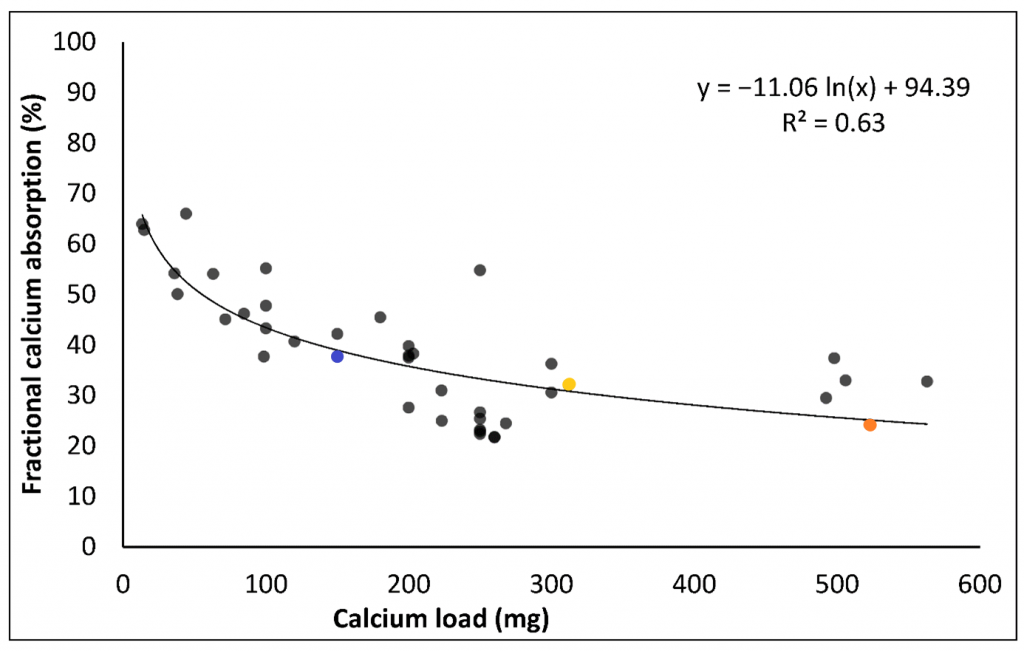15 Sep A healthy diet is only possible with balanced meals
This Thought for Food from Shiksha Adhikari and Thom Huppertz of Wageningen University and Research unpacks how we should relate daily nutrient intakes to meal intakes. Food consumed throughout the day (our diet) provides nutrients to meet human requirements. The digestion, absorption and utilization pathways vary between nutrients, and determine when, what, and how much you should eat to meet requirements.
A balanced diet has become a household term, defined as “A diet that provides all the essential nutrients in sufficient quantity and in the correct proportions to promote good health”. Most of the information on nutrient requirements available concerning the definition of a balanced diet is provided on a daily basis: what should you eat in a day?
Requirement of nutrients
For a healthy adult, 1000 mg calcium is recommended per day, and 0.83 g protein per kg body weight per day. However, it is not further explained whether they should be consumed equally distributed across all meals, or whether you can consume all the required quantity in one meal, or even combine requirements over multiple days. If you eat, for instance, a meal consisting of 4 slices of whole wheat bread (20% calcium requirement), 2 slices of cheese (40% calcium requirement) with a cup of hot chocolate (40% calcium requirement), you can meet your entire calcium requirement for the day within one meal. But is this a good idea?
Digestion, absorption and utilization of nutrients
The nutrient contents of the foods you eat are well known. However, these foods go through the processes of digestion and absorption in the body. Not all nutrients are fully digested, and even the amount that is digested may not be fully absorbed, making the absorbed amount of nutrient (sometimes drastically) different from the amount eaten.
Good examples of this are calcium and protein. Protein digestion varies between food sources, but the digestible fraction is almost fully absorbed. Contrastingly, only around 30% of ingested calcium is absorbed, even from highly digestible sources.
Following digestion and absorption, these nutrients are either utilized immediately, or in some cases they are stored in different parts of the body. In case of the nutrients that are not stored in the body, any excess consumed at one meal that is not utilized may be lost before the next meal. This is the case for essential amino acids, for which the body does not have storage.
Metabolism of calcium: absorption specific case
A previous Thought for Food article has covered calcium in depth, but not at the meal level. Many studies have shown that with an increase in the dose of calcium introduced in the digestive system, the percentage of calcium that is absorbed is lower. This is shown by Figure 1.

Figure 1 shows that if you drink half serving of milk, providing ~165 mg of
calcium (blue dot), 66 mg is absorbed. For one serving of milk providing ~330 mg of calcium, (yellow dot) 120 mg is absorbed while if 1.5 servings of milk is consumed, providing ~495 mg of calcium (orange dot), this results in 146 mg absorbed.
As an example of how this might impact on daily consumption, consider the RDI for calcium of 1000 mg, to achieve the actual bodily requirement of 300 mg of absorbed calcium. Consuming 900 mL of milk as a single serving would lead to sufficient intake but insufficient absorption, whereas dividing this over 3 portions of 300 mL would result in both sufficient intake and absorption. Hence, in the case of calcium it is important not only to meet RDI, but also to distribute intake throughout the day such that required absorption is also met.
Metabolism of Protein (amino acids): utilization specific case
The amount of absorbed amino acids can be drastically different to the amount present in the food consumed. Even the absorbed amino acids are not all utilized because utilization is dependent on the amount of each individual essential amino acid available. All essential amino acids need to be available for the body to synthesize protein. Even if only one essential amino acid is not sufficiently available, there is a halt in protein synthesis. Any excess other amino acids then cannot be used. Furthermore, the absorbed amino acids are only available for use for a limited time after absorption. Studies have shown that after protein ingestion, blood amino acid levels rapidly increase, but have typically returned to basal levels within 3-4 hours.
For optimal protein utilization, several factors are crucial: the amino acid composition, the digestibility and the time scales of consumption. The first two are widely studied, whereas the latter has received only limited attention, but is equally important.
For example, imagine you are eating beef jerky, which is an adequate source of protein and giving you at least as much of all the essential amino acids as a reference protein (a hypothetical protein that has all the essential amino acids in the right amount to meet human requirements). As seen in figure 2 (yellow bar), you get substantially more of the essential amino acid lysine than you would get from a reference protein. However, you only get a limited excess of sulphur containing amino acids (orange bar). This leaves excess lysine available for use, but which cannot be used in this situation, due to lack of sulphur containing amino acids. Unless another protein source is consumed in the same meal that adds more of the sulphur amino acids, this excess lysine will be converted to non-essential amino acids or excreted.
Therefore, it is important to eat protein that provides a balanced amount of amino acids needed by the body at every meal.

Here’s a simple daily intake example for protein. Let’s assume you are a 72kg individual, so need 60 g protein per day. Let’s also assume your protein sources are milk and oats for breakfast, a vegetarian burger for lunch, and rice and peas for dinner.
Your 60 g protein intake can be divided equally between these meals (e.g., for breakfast, you eat 75g oats (~10 g protein) with 300 ml milk (~10 g protein)). On a daily basis, it looks like your diet meets all requirements for protein and essential amino acids (right-most bar in the graph). However, your meal level protein consumption is not always sufficient in essential amino acids. The excess essential amino acids from breakfast (above the red line in the figure) will not be available for use when you eat your lunch, meaning your protein requirements will only be met for a portion of the day.

The solution to avoid this situation is to make choices of food that complement each other to compensate for lacking amino acids. For example, mixing a lysine poor source such as oats with a lysine abundant source such as milk achieves a complete overall amino acid profile.
Nutrient storage
Normally, we only consider the daily requirements of nutrients, and not how this should be dispersed through the day. For many nutrients, such as Vitamin A, which is effectively stored in the body for future use, this is sufficient. For other nutrients, the form and extent of storage varies substantially: the body maintains only a small store of iron, which allows some buffer against short-term inadequate intakes. In the case of calcium, storage and function overlap: almost all bodily calcium is in our bones, serving a structural purpose, but is also drawn upon to maintain homeostasis of circulating calcium needed for other essential functions. For many other nutrients, the understanding of the balance of digestion, absorption, storage and loss is poorly understood.
If meals are not balanced then some nutrients (e.g., calcium and protein) may not be efficiently digested, absorbed or utilized in the body. Therefore, it is not possible to achieve a healthy diet without balanced meals that ensure efficient use of nutrients.
The importance of meals and timings in a sustainable food system
Meals and timing of nutrient intake are of course very important in the context of personal diets. However, they should also be considered in the context of sustainable food systems and the diets they provide. Many modelling approaches in this context, at present, consider RDIs as inputs and calculate population requirements based on these. However, it should be realized that this only works if food and nutrients are optimally distributed over the population and even over meals, which is unlikely to be achieved or even practical. Hence, requirements for future food systems should consider timescales of nutrient requirement, to move to practical and optimal systems.
Take Home Message
Food is digested and nutrients are absorbed for utilization in the body. For some nutrients, the process of absorption is dose dependent while utilization additionally depends on the type of nutrients absorbed and available in the body. Over or under consumption of nutrients in any meal can cause inefficient metabolization (absorption and/or utilization) of nutrients in the body. If a meal is not constructed properly, it may follow dietary recommendations, but still be insufficient. To have a healthy diet, breakfast is as important as dinner and so is lunch.
This Thought for Food was written by Shiksha Adhikari and Thom Huppertz, researchers in human nutrition from Wageningen University and Research, The Netherlands.






